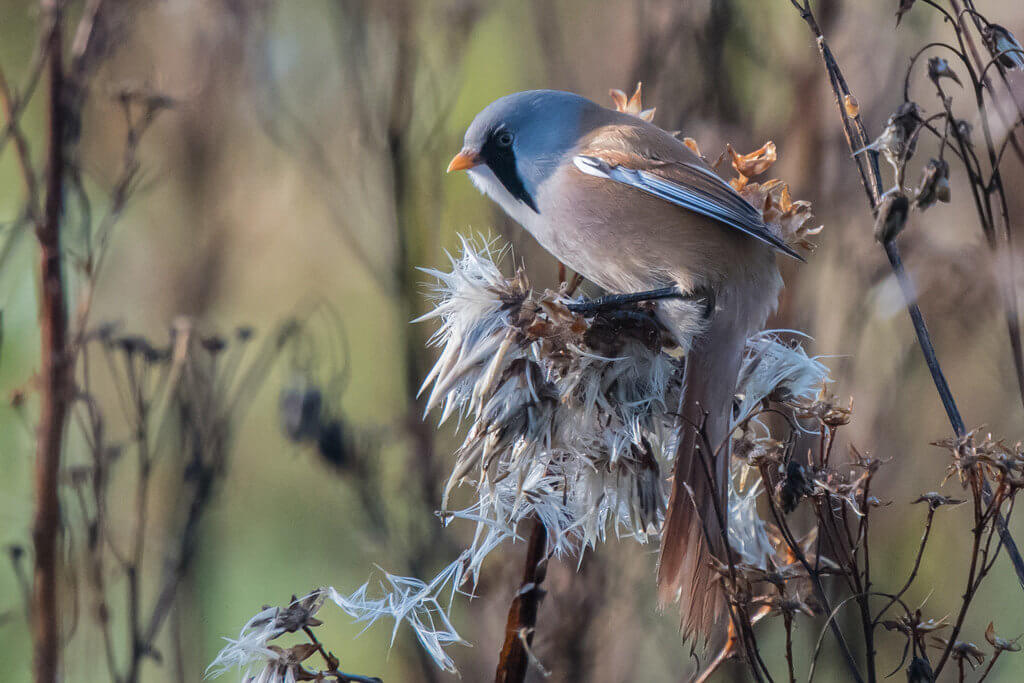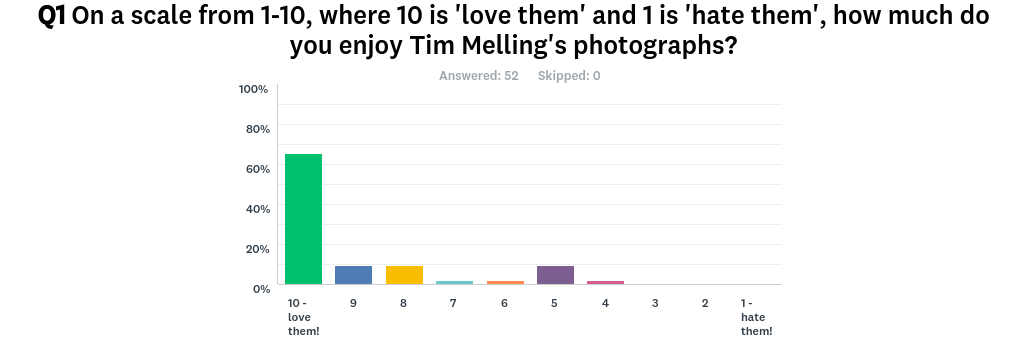
Tim writes: I suppose the most unusual thing about this photograph is that it was not photographed in a reedbed. In winter they are supposed to feed mainly on the seeds of Common Reed (Phragmites australis) but I found a flock feeding in a rough field near to a reedbed in North Lincolnshire. It wasn’t a small number either. There were about fifty of them all feeding on what I think is Ragwort (Senecio vulgaris). That is two benefits of this much-maligned plant as it is also the larval foodplant of the beautiful Cinnabar moth.
Its scientific name Panurus biarmicus is an interesting one. Panurus means it has a large tail, which it does, though perhaps not the feature I would home in on if I were naming it. Biarmicus it shares with Lanner Falcon (Falco biarmicus) so you would expect it to refer to a moustache which both birds have. It is thought to be a mistake by Linnaeus who named the Lanner biarmicus first thinking it meant “with two beard stripes” but he missed out an s (should have been bisarmicus). Temminck presumably thought it meant bearded when he used biarmicus for Bearded Tit, but the word now refers to an old region in Northern Russia on the White Sea called Biarmia.
Taken with Nikon D500 Nikkor 300mm f4 with 1.4x converter (420mm) set at f5.6 1/1600 ISO 2200
And here are the results of last week’s poll…

[registration_form]
Many years ago, in the early 1990’s, I observed a small group of bearded tits feeding on the seeds of rosebay willowherb (Chamerion angustifolium) at Farlington Marshes in Hampshire. They were several hundred metres away from the nearest reedbed. I think BWP or similar does make reference to a more varied seed diet for this species than is traditionally thought. However, in 25 years of birdwatching and bird surveys at the nature reserve it remains the only time I ever observed beardies eating any other wild seed other than reed.
Jason – welcome and thank you for your comment.
It’s difficult to be certain, but the seed heads this individual is feeding on appear to be on creeping thistle (Cirsium arvense). A minor point of what is a superb photo.
Richard